Sociocracy is a governance system, just like democracy or corporate governance methods. It’s best suited for organizations that want to self-govern based on the values of equality.
Some people refer to sociocracy as Dynamic Self-Governance or simply Dynamic Governance.
History of sociocracy
What we call sociocracy now was first developed as the Sociocratic Circle Method by Gerard Endenburg in the Netherlands in the 1980ies. Its origins are in:
- Natural systems: complex organizations work as decentralized, nested systems that are semi-autonomous. That means they are both autonomous and dependent on each other, like, for example, the respiratory and the nervous system.
Sociocracy builds on a set of simple rules. For example, a simple rule defines how to create a circle. The same rule then allows any circles to form a sub-circle, and the sub-circles to form sub-sub-circles and so on. - Decision-making builds on decision-making by the Quakers that have a strong commitment to inclusion and egalitarian values.
- Cybernetics: sociocracy uses feedback loops to learn about the impact of actions.
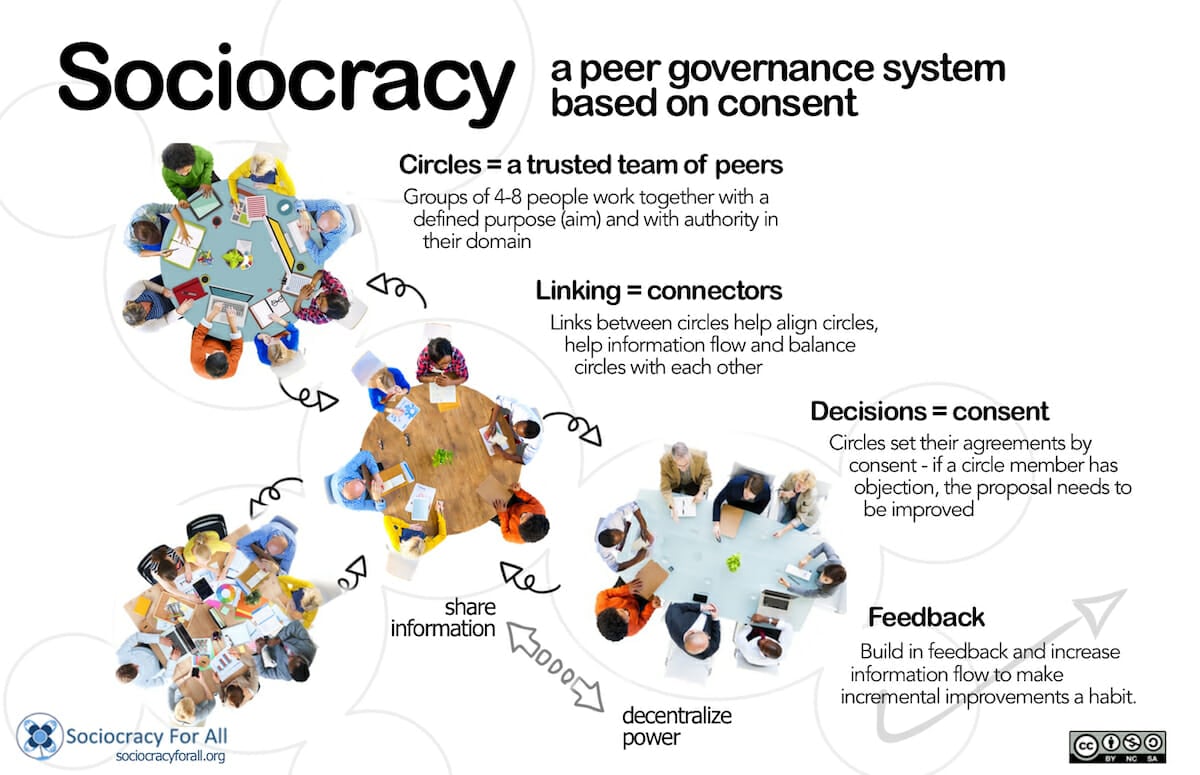
Principles and tools of sociocracy:
Sociocratic features come in the areas of structure, meetings, and continuous improvement.
Organizational structure
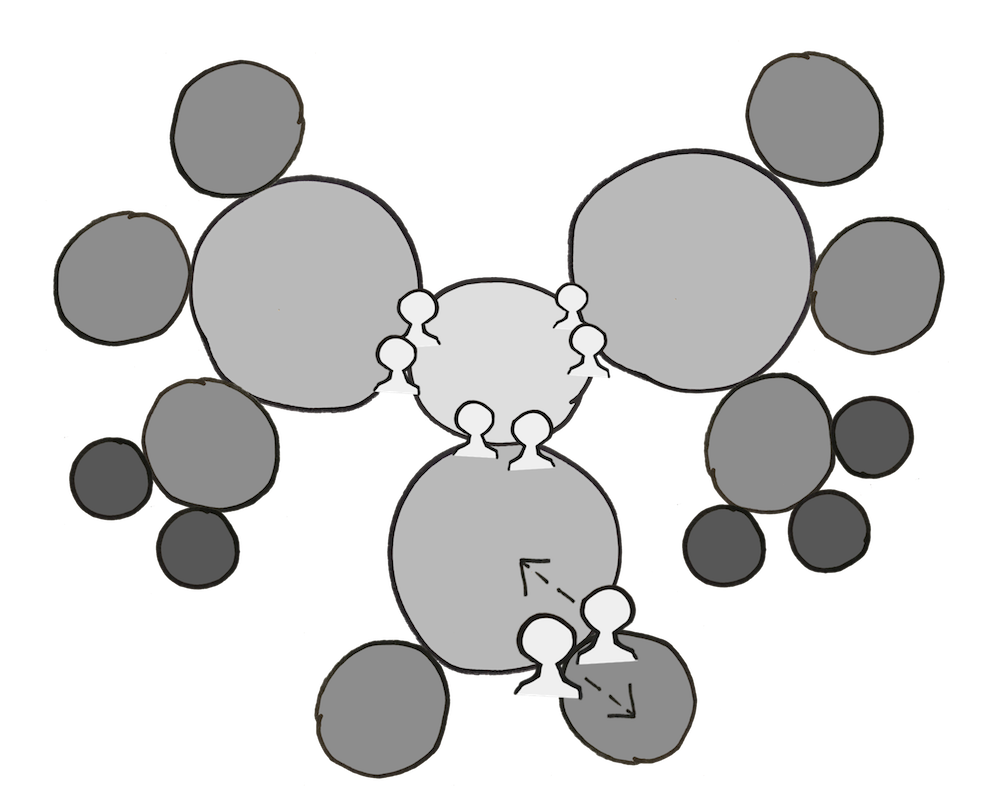
- Small groups are the basis of everything. Those small groups are called circles.
- Those sociocracy circles have a defined aim (= a description of what the circle is doing) and full authority in a domain (= what the circle has authority over).
- Circles will define roles, both to run itself smoothly and to “package” operations into meaningful bits. Any member will fill one or more roles.
- Linking roles connect circles to other related circles. In double-linking, two people from one circle – the delegate and the leader – are also full members of the parent circle so information can flow between the teams and their decisions align.
Decision making and rounds
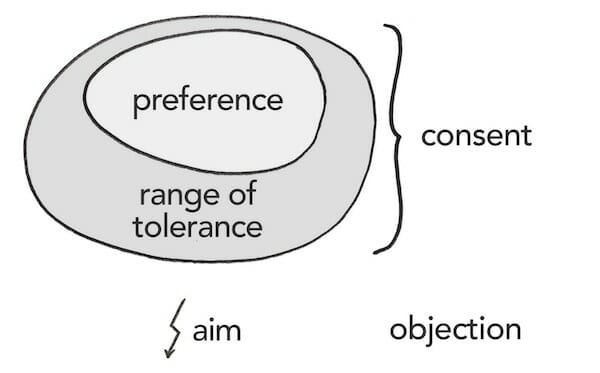
- Circles make policy decisions by consent. There is consent to a proposal when no member of the circle has an objection. By definition, objecting requires that a circle member has reason to assume that circle cannot achieve its aim adequately if the circle approves the proposal. In other words, any circle member can flag an issue in a proposal and make sure the circle improves the proposal before passing it.
- At the same time, circles use consent to elect people into roles like the circle leader, secretary, facilitator or a self-defined operational role. The intention is that only people serve in offices who have the trust of all their coworkers.
- A circle will decide by consent what topics they put on their agenda and how much time they spend on each topic.
- Rounds: a trademark tool for meetings, rounds refer to the practice of talking one-by-one in meetings until everyone has spoken once in that round. The intention is to hear all voices. At the same time, rounds contribute to more mutual listening and understanding.
Continuous improvement
A set of practices supports the general commitment for continuous improvement of the organization. Examples are performance reviews, meeting evaluations ,or a requirement to set review dates for policies. The intention is for these agreements to be lived and maintained well.
Intentional spaces for feedback encourage a commitment to growth and learning through feedback, both on the organizational level, team, and individual level.
Use and movements within sociocracy
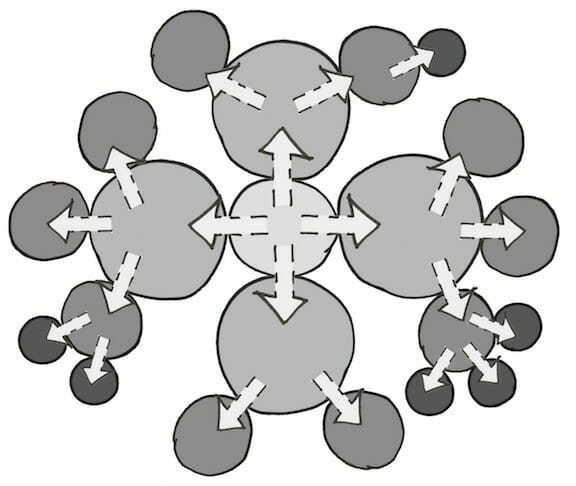
Sociocracy is used in many sectors with a global reach, most common in Europe and the Americas. Specifically, many intentional communities (cohousing and ecovillages) use sociocracy. Some nonprofits, cooperative workplaces like worker cooperatives or non-hierarchical workplaces use sociocracy as well as schools.
Its principles have a resemblance to permaculture and cooperative principles as well as Agile practices. Also, many organizations combine sociocracy with tools like Nonviolent Communication (see article NVC and sociocracy) or other frameworks. Within the sociocratic movement, jargon can differ. (For more information on flavors and distribution of sociocracy worldwide, see “Sociocracy. The Movement”).
How does sociocracy differ from consensus or voting? How does it differ from hierarchy?
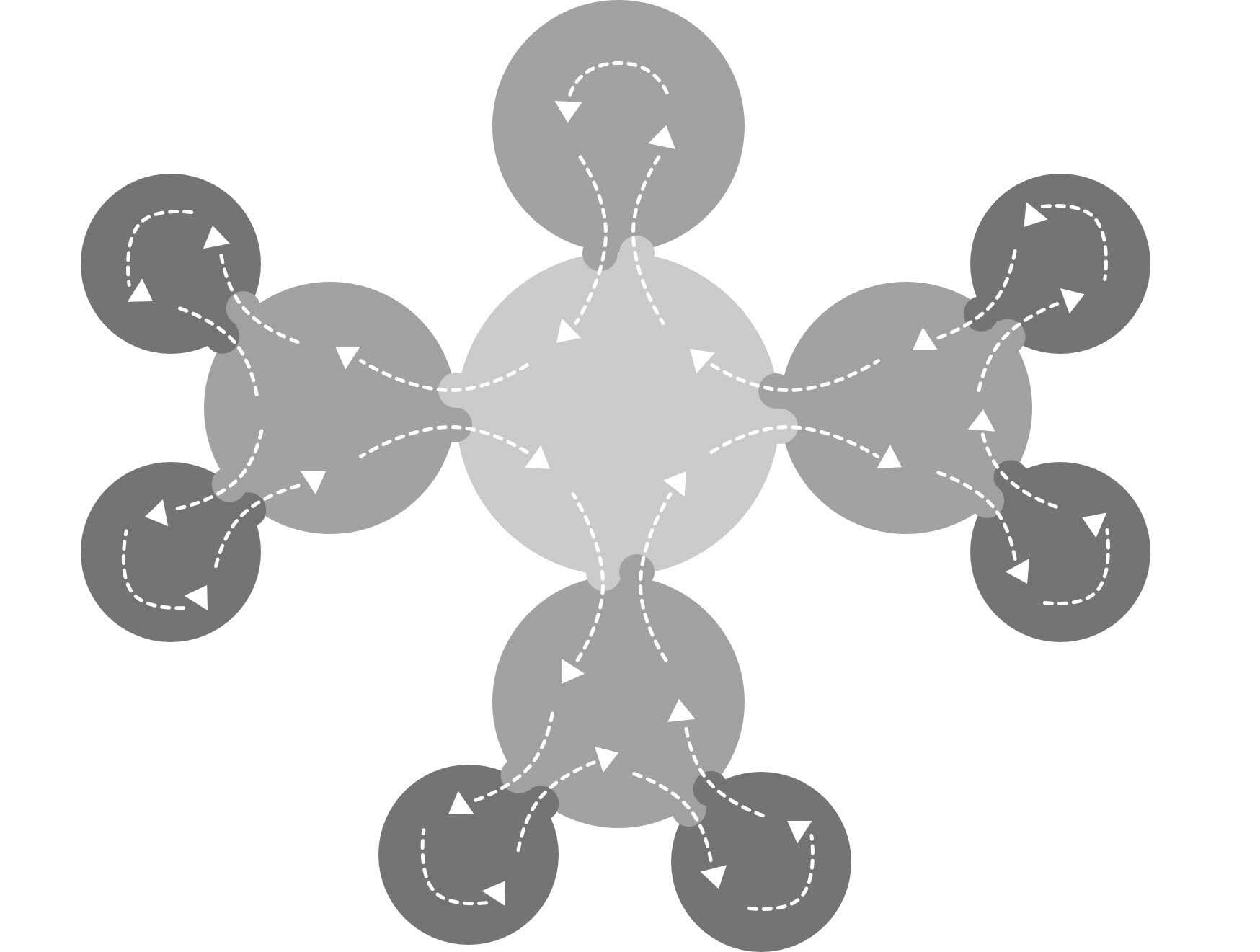
- The difference between consensus and consent is not clear-cut because the practice of consensus varies. The simplistic difference is this: consensus requires agreement. Consent requires that no one disagrees. A circle member that objects will need to state their objections with reference to the circle’s aim. Understanding the core of the objection can then improve the proposal.
Another difference is that consensus-run organizations often require the group of all members to make decisions together. This is not the case in sociocracy, where decision making is distributed and decentralized into smaller groups. - Voting (majority vote) and consent differ in that in consent decision-making, the majority cannot outvote the minority. A group will strive to integrate each objection until all members consent. The idea behind that is that minority opinions matter and that majority vote tends to polarize instead of bringing people together.
- Hierarchy or top-down decisions are typically autocratic decisions where the superior can overrule the subordinate. This is not the case in sociocracy. Each circle or role will have authority in a defined domain. Since domains are nested, there is a hierarchy of domains but no autocratic relationship between people or roles. The combination of top-down and bottom-up linking between circles leads to circular hierarchy.
Limits of sociocracy and ideal use cases
Consent requires working through issues in a collaborative way. That means that sociocracy requires a commitment to listening, learning, and using its tools. For some, this might require some “un-learning” of practices from more hierarchical contexts.
Because it was developed for organizations, sociocracy works best in organizations that have a certain level of clarity and structure. It works best in organizations where most members are operationally involved and can be part of decision-making circles in an area where they have expertise and experience.
Find out more about how sociocracy works:
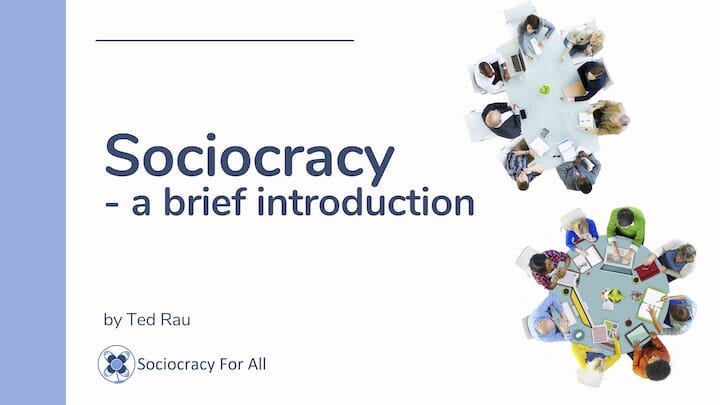
Learn more about each topic in sociocracy on this page.
Our booklet Sociocracy – a brief introduction includes an additional section on implementation and links to Sociocracy For All’s resources and books.

